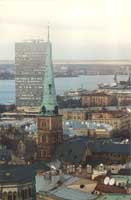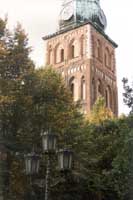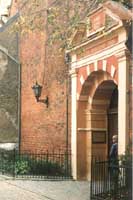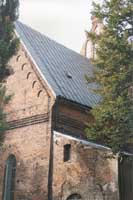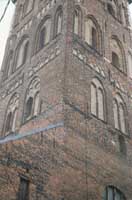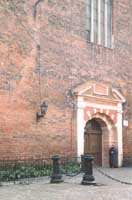St. Jacob's Catholic Church and Associated Buildings
Architectural monument of national significance. Dates from the 13th - 20th century.
2 Klostera Street,4, 6 M. Pils Street
St.Jacob's Catholic Church was originally built in the form of Early Gothic circa 1225; it was finished circa 1300, although two upper floors of the tower and the spire were built in the late-fifteenth century. The Church is quite small (total length is about 50 meters), but has an expressive slim tower, which best has survived pyramidal form of medieval churches in Riga. The pyramid roof was added to the building in 1756, but the main portal - in 1782. When the front line of World War I came closer the Cathedral's four bells were evacuated to Russia and have been lost. At the very beginning it was the place of worship for the members of the Order; later on the Catholic congregation and the nuns of the Cistercian monastery, which was called the monastery of the singing maidens.
The sermon delivered in 1522 in St.Jacob's and St.Peter's Church introduced the Reformation to Riga. After the Reformation, St.Jacob's Church turned into the Riga Latvian Church. The Polish King Stefan Batoriy repurchased the Church from the City and Jesuits occupied the Church in 1582. In turn the Swedish King Gustav II Adolf evicted Jesuits from the Church and changed it to the Lutheran Church of Swedish garrison. But after 1710 St. Jacob's Church turned into the Russian crown church. It is known that Nikolaus Ludwig von Zinzendorf, the establisher of Herrnhuter congregation count, preached in this Church in 1736.
© Artificial Intelligence
Laboratory, IMCS,
University of Latvia |
 |
